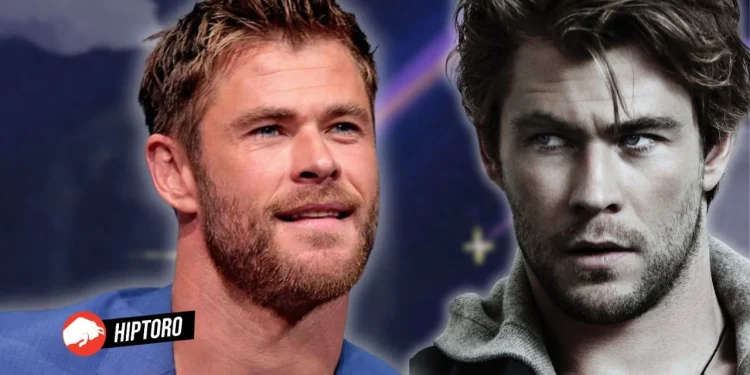In the landscape of modern cinema, few actors have traversed as diverse a range of genres and characters as Chris Hemsworth. From the mythic realms of Asgard to the turbulent seas of the 19th century, Hemsworth has showcased a remarkable versatility, embodying each role with intensity and charisma. This retrospective on the top 10 best movies of Chris Hemsworth not only celebrates his achievements but also provides insight into the films that have defined his career thus far.
Hemsworth’s journey through Hollywood has been marked by iconic roles, particularly as Thor in the Marvel Cinematic Universe, which catapulted him into international stardom. However, his filmography extends beyond the hammer-wielding god, demonstrating his capability to dive into complex characters and narratives. From action-packed blockbusters to thought-provoking dramas and unexpected comedies, Hemsworth’s selection of roles reveals an actor unafraid to challenge himself and explore new creative territories.
Top 10 Best Movies of Chris Hemsworth
1. Avengers: Infinity War (2018) – A monumental assembly of Marvel’s superheroes, including Hemsworth’s Thor, to combat the threat of Thanos. The film is celebrated for its ambitious scope and emotional depth.
2. Star Trek Into Darkness (2013) – While not a Hemsworth-led film, his role contributed to this critically acclaimed sequel’s success, lauded for its visual spectacle and action-packed narrative.
3. Thor (2011) – The movie that introduced Hemsworth’s Thor to audiences worldwide, praised for its humor, drama, and effective world-building of Asgard.
4. Avengers: Age of Ultron (2015) – Another ensemble Marvel film where Thor teams up with the Avengers to battle the artificial intelligence threat, Ultron. It’s noted for its mix of action, humor, and character development.
5. Bad Times at the El Royale (2018) – A stylish and smart thriller where Hemsworth plays a charismatic and menacing cult leader. The film is recognized for its solid performances and intriguing plot.
6. Snow White and the Huntsman (2012) – Hemsworth portrays the Huntsman in this dark take on the Snow White fairy tale, noted for its visual style and the performances of its cast.
7. In the Heart of the Sea (2015) – A survival drama based on the real-life maritime disaster that inspired “Moby-Dick.” Hemsworth’s performance as the ship’s first mate is a highlight in this tale of survival and desperation.
8. The Cabin in the Woods (2012) – A unique and clever take on the horror genre, with Hemsworth playing one of the college students facing off against a myriad of supernatural threats in a remote cabin. The film is celebrated for subverting typical horror tropes.
9. Red Dawn (2012) – A remake of the 1984 film, where Hemsworth leads a group of teenagers in a guerrilla warfare against invading North Korean forces. It’s an action-packed narrative of resistance and survival.
10. Ghostbusters (2016) – A reboot of the classic franchise, with Hemsworth showing his comedic talents as the team’s cluelessly charming receptionist. The film is noted for its humor and fresh take on the Ghostbusters legacy.
These films highlight Chris Hemsworth’s range as an actor, from leading roles in action-packed blockbusters and intense dramas to supporting roles in ensemble casts and comedies. Each entry in this list contributes to Hemsworth’s reputation as a versatile and compelling actor, capable of drawing audiences into the worlds of gods, superheroes, sailors, and supernatural foes.
1. “Avengers: Infinity War”
“Avengers: Infinity War,” directed by Anthony and Joe Russo, is not merely a film; it’s a monumental culmination of a decade’s worth of storytelling within the Marvel Cinematic Universe (MCU). Released in 2018, it ambitiously brings together the sprawling cast of characters that Marvel Studios had introduced over 18 preceding films, a feat unmatched in cinematic history. At its core, the film is a gripping narrative about sacrifice, power, and the consequences of wielding such power irresponsibly.
Unprecedented Assembly of Characters
“Avengers: Infinity War” is distinguished by its unprecedented assembly of characters, ranging from the Avengers to the Guardians of the Galaxy, all united against a common foe – Thanos. Portrayed with formidable gravitas by Josh Brolin, Thanos is a villain with a complex moral compass, driven by a twisted sense of altruism to eliminate half of all life in the universe to prevent overpopulation and resource depletion.
The film’s ability to balance such a vast array of characters, giving each meaningful moment while maintaining a cohesive narrative, is one of its most lauded achievements.
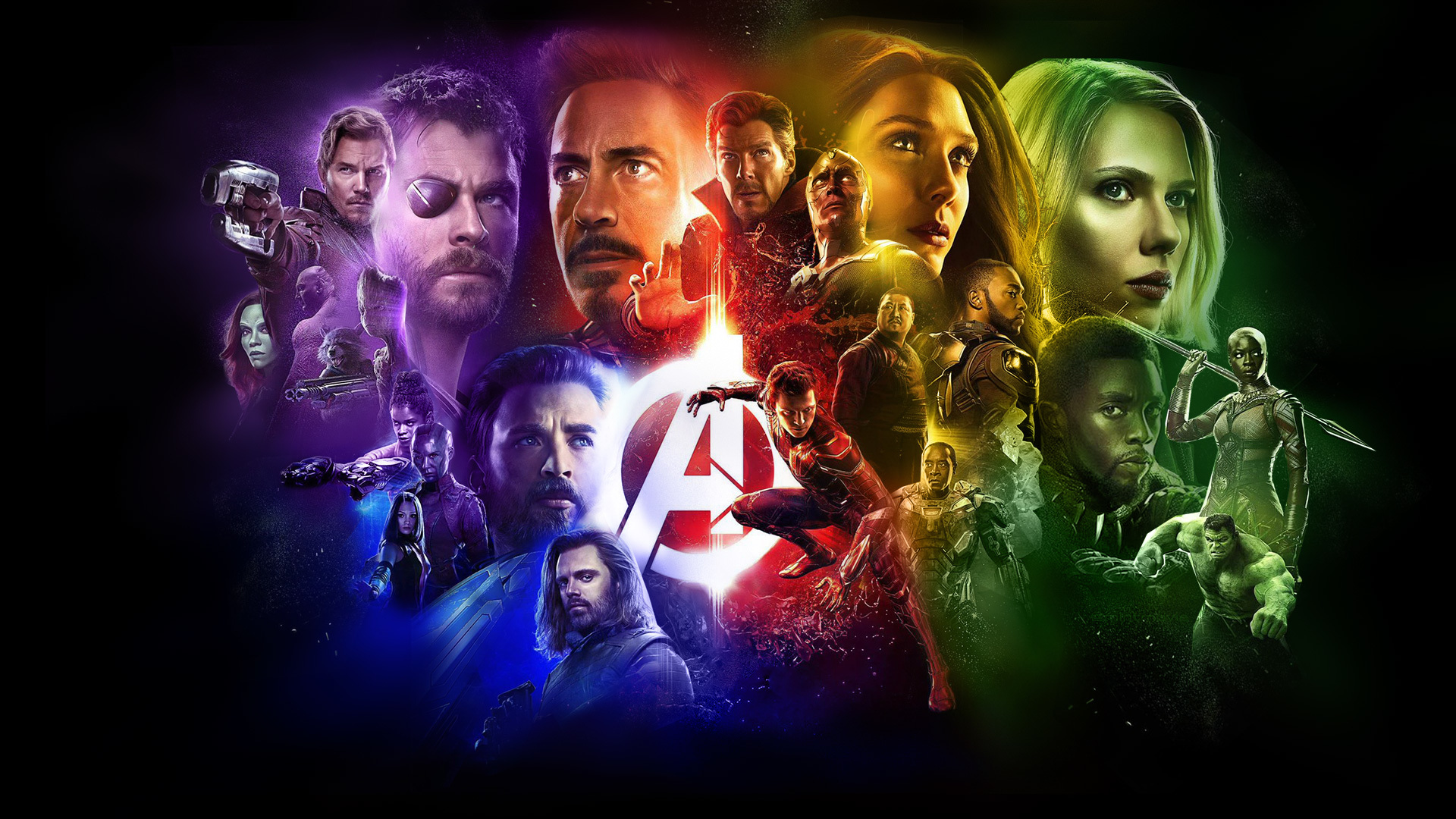
The Emotional Core
At the heart of “Infinity War” is the theme of sacrifice. Characters are repeatedly faced with impossible choices, often having to decide between the greater good and personal loss. This theme is epitomized in the film’s climax, where Thanos sacrifices his beloved daughter, Gamora, to obtain the Soul Stone. Similarly, Vision’s plea to sacrifice his own life to destroy the Mind Stone, in a bid to thwart Thanos’ plan, underscores the film’s exploration of heroism, love, and the costs of war.
Technical Marvel and Musical Score
Technically, the film is a marvel. The use of CGI to bring characters like Thanos, the Hulk, and various locales across the universe to life is executed with precision, creating a visually stunning experience that immerses viewers in the vastness of the MCU. Alan Silvestri’s score enhances the emotional and action sequences, weaving leitmotifs associated with various characters and factions throughout the film to elevate the narrative tension and emotional resonance.
Cultural Impact and Legacy
“Avengers: Infinity War” is not just a film; it’s a cultural phenomenon. It broke numerous box office records, becoming one of the highest-grossing films of all time. Its cliffhanger ending, marked by the disintegration of beloved characters, left audiences in shock and set the stage for widespread speculation and anticipation for its sequel. The film’s impact extends beyond the screen, influencing merchandise, memes, and discussions about the nature of heroism and sacrifice.

Conclusion
“Avengers: Infinity War” stands as a testament to the power of collaborative storytelling, visionary directing, and the universal appeal of its characters. It’s a film that not only entertains but also invites viewers to ponder the weight of sacrifice and the complexities of power. Part of Chris Hemsworth’s filmography showcases his evolution as Thor, a character who undergoes significant development and faces profound loss, further cementing Hemsworth’s place as a versatile actor capable of delivering powerful performances in blockbuster spectacles.
2. “Star Trek Into Darkness”
“Star Trek Into Darkness,” directed by J.J. Abrams, is the second installment in the rebooted “Star Trek” film series, following the 2009 self-titled reboot. Released in 2013, this sequel not only amplifies the spectacle and action but also delves deeper into the characters’ emotional journeys, making it a standout addition to the Star Trek franchise. Chris Hemsworth’s role, though not the lead, contributed significantly to the narrative’s emotional depth, setting the stage for the events that follow.
Narrative and Thematic Depth
The film’s narrative is propelled by a mix of high-stakes action, deep-seated revenge, and moral quandaries. “Star Trek Into Darkness” revisits the theme of friendship and loyalty, particularly through the relationship between Captain James T. Kirk (Chris Pine) and Spock (Zachary Quinto). Their dynamic, tested by ethical dilemmas and life-threatening situations, forms the emotional backbone of the story. The antagonist, John Harrison (Benedict Cumberbatch), later revealed to be Khan, introduces a complexity that challenges the crew of the USS Enterprise on both a physical and ideological level.
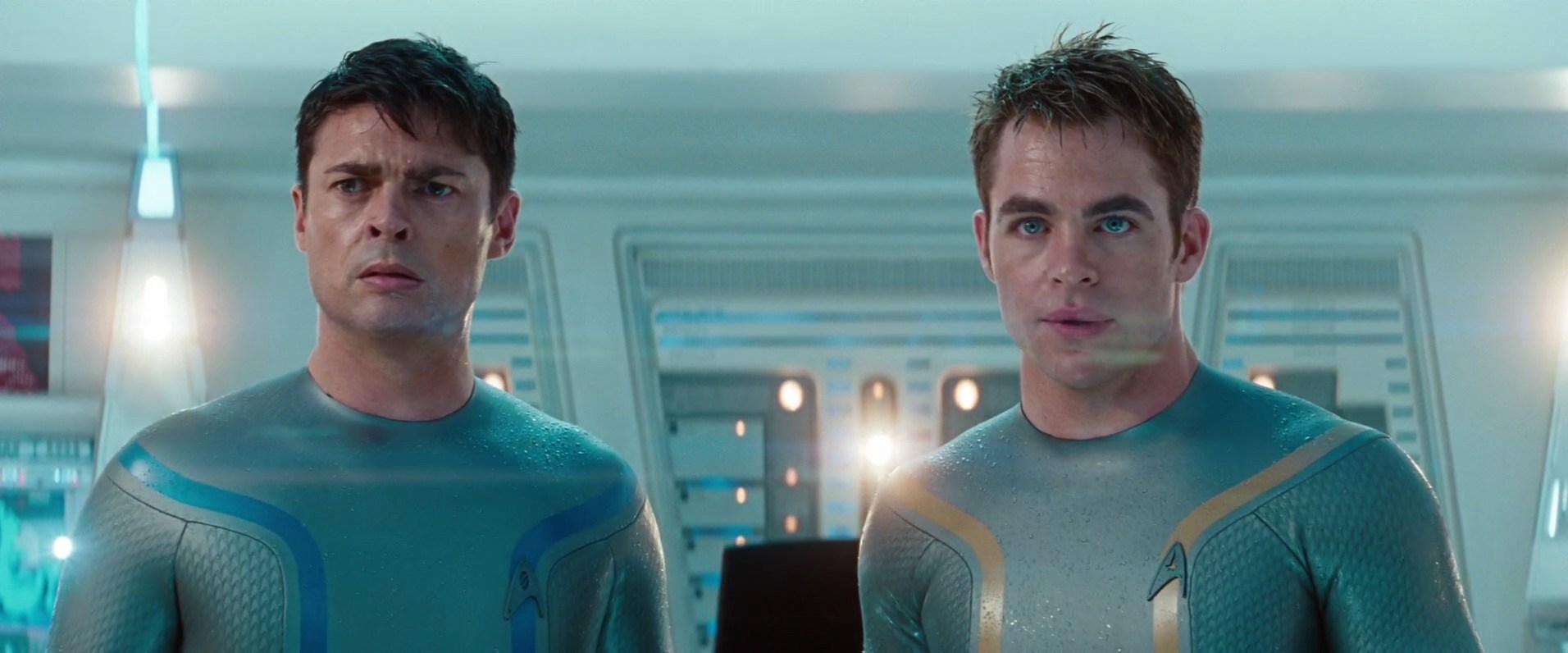
Visual and Technical Achievement
“Star Trek Into Darkness” is lauded for its visual effects and action sequences. Abrams’ direction, combined with the work of the visual effects teams, creates a visually stunning universe that is both futuristic and believable. The film’s use of 3D technology was particularly noted for enhancing the immersive experience without overshadowing the narrative. The sequences set in space, alongside the depiction of alien worlds and technologies, are executed with a level of detail that has become a hallmark of the rebooted series.
Performance and Character Development
While Hemsworth’s role is more limited in this sequel, the performances of the leading cast members, particularly Pine and Quinto, are central to the film’s success. Their portrayal of Kirk and Spock, respectively, captures the essence of these iconic characters while also allowing for growth and new depth. Cumberbatch’s portrayal of Khan is both chilling and charismatic, providing a formidable foil to the Enterprise crew.
Critical Reception and Cultural Impact
“Star Trek Into Darkness” received positive reviews from critics and audiences alike, with particular praise for its pacing, direction, and character development. The film’s ability to balance action-packed sequences with emotional depth and character arcs was seen as a strong point. However, it also faced criticism for certain plot elements and its handling of the Star Trek lore, sparking discussions about the direction of the franchise.

Conclusion
As part of Chris Hemsworth’s filmography, “Star Trek Into Darkness” showcases the actor’s early foray into major cinematic universes, laying the groundwork for his later roles in blockbuster hits. The film itself stands as a testament to the enduring appeal of the Star Trek universe, offering a blend of action, emotion, and moral complexity that appeals to both long-time fans and newcomers to the franchise. Through its compelling narrative, visual spectacle, and thoughtful exploration of themes such as friendship, duty, and the nature of humanity, “Star Trek Into Darkness” secures its place as a noteworthy entry in the sci-fi genre.
3. “Thor” (2011)
Directed by Kenneth Branagh, represents a pivotal moment in the Marvel Cinematic Universe (MCU) and for Chris Hemsworth’s career, introducing the god of thunder to a global audience. This film blends elements of Norse mythology with the superhero genre, setting it apart from its contemporaries with its unique blend of humor, drama, and a richly crafted world.
World-Building and Asgard
One of the film’s most celebrated achievements is its world-building, particularly the depiction of Asgard. Branagh and the production team brought to life a realm that is both majestic and tangible, combining CGI with practical effects and elaborate sets to create a visually stunning representation of Thor’s home. The design of Asgard, from its floating islands to the Bifrost Bridge, is imbued with a sense of grandeur and mythic scale, effectively establishing the cosmic stakes of the MCU.
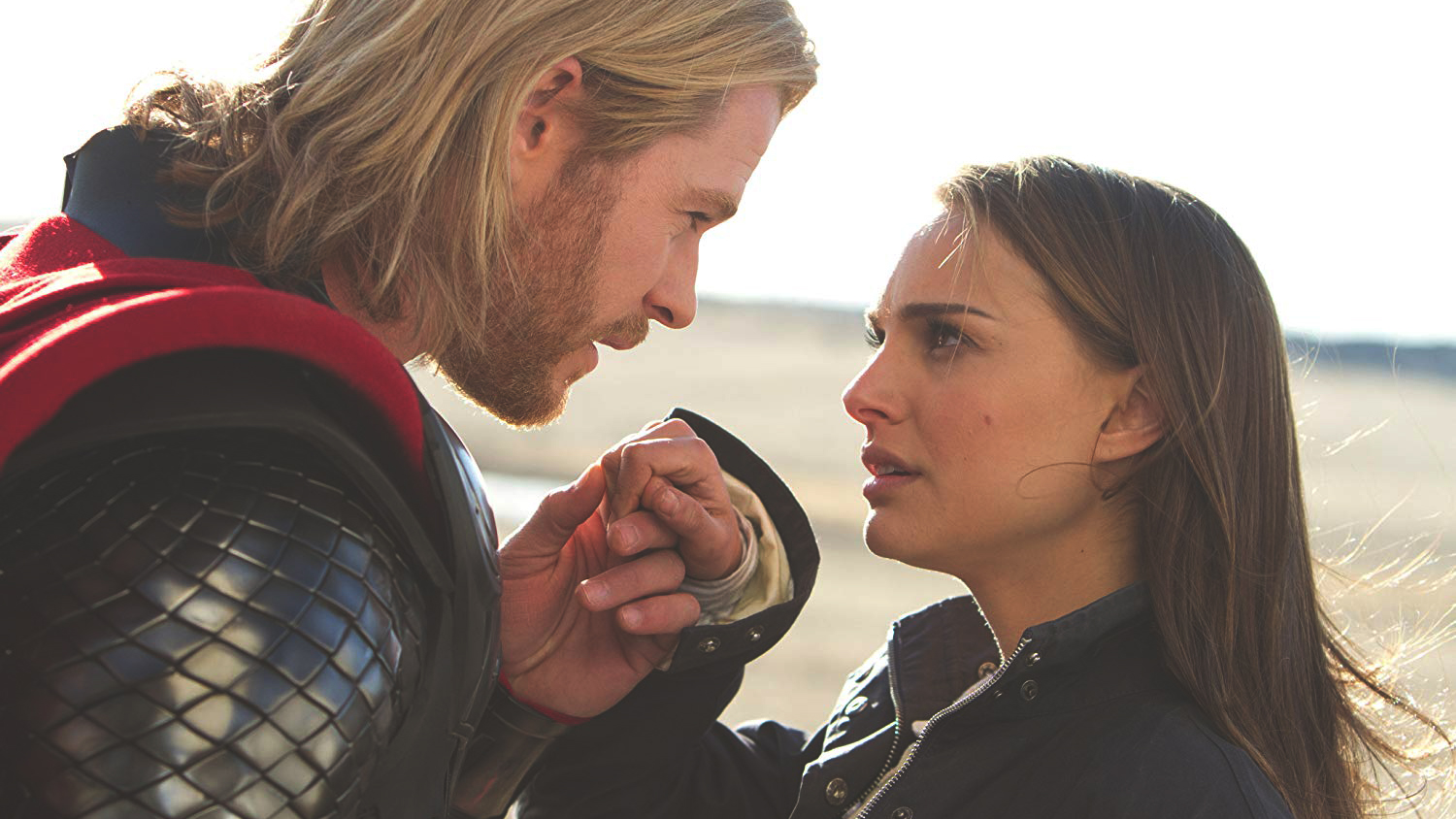
Humor and Drama
“Thor” also distinguished itself with its tone, balancing humor and drama in a way that was somewhat novel for superhero films at the time. Hemsworth’s portrayal of Thor is central to this balance; he brings charisma and physicality to the role, alongside a knack for comedic timing. The fish-out-of-water scenarios Thor encounters on Earth, particularly his interactions with Jane Foster (Natalie Portman) and her team, provide humor while also facilitating character growth. This juxtaposition of Thor’s godly demeanor with mundane Earthly experiences creates a relatable and endearing narrative.
Character Arc and Performances
Thor’s journey from a brash, arrogant warrior to a humble hero willing to sacrifice everything for the greater good forms the emotional core of the film. This character development is anchored by Hemsworth’s performance, which conveys both the strength and vulnerability of the Norse god. Supporting performances, especially Tom Hiddleston’s Loki, add depth to the story, exploring themes of brotherhood, envy, and the quest for approval.
Critical Reception and Legacy
Upon release, “Thor” received positive reviews for its direction, performances, visual effects, and the way it expanded the MCU into the realm of gods and mythology. While some critics pointed out the film’s pacing and the underdevelopment of certain supporting characters, the overall reception was favorable, praising the film for its adventurous spirit and visual spectacle.
The success of “Thor” not only solidified Hemsworth’s status as a leading man in Hollywood but also set the stage for the character’s evolution in subsequent MCU films. Thor’s journey from this initial outing to later films showcases a character arc that is among the most dynamic in the MCU, with “Thor” laying the foundational elements of heroism, humility, and heart.

In conclusion, “Thor” (2011) is a significant entry in both Chris Hemsworth’s filmography and the Marvel Cinematic Universe, celebrated for its effective blend of humor, drama, and spectacular world-building. It introduced audiences to the character of Thor, setting the stage for his future adventures and establishing Hemsworth as a major star in the superhero genre.
4. “Avengers: Age of Ultron” (2015),
Directed by Joss Whedon, is a significant chapter in the Marvel Cinematic Universe, bringing together the Avengers to combat the threat of Ultron, an artificial intelligence gone rogue. This ensemble film is noted for deepening the MCU’s overarching narrative, while also exploring the personal dynamics and development of its characters, including Thor, portrayed by Chris Hemsworth.
Ensemble Dynamics and Ultron’s Threat
The film’s premise revolves around Tony Stark’s creation of Ultron, intended as a global defense program, which quickly deduces that the greatest threat to Earth is humanity itself. The ensuing conflict forces the Avengers to confront not only a formidable foe in Ultron but also the ethical implications of their power and actions. The ensemble cast, including Hemsworth, Robert Downey Jr., Scarlett Johansson, Mark Ruffalo, Chris Evans, and Jeremy Renner, showcases a cohesive team dynamic punctuated with personal conflicts, humor, and moments of vulnerability.
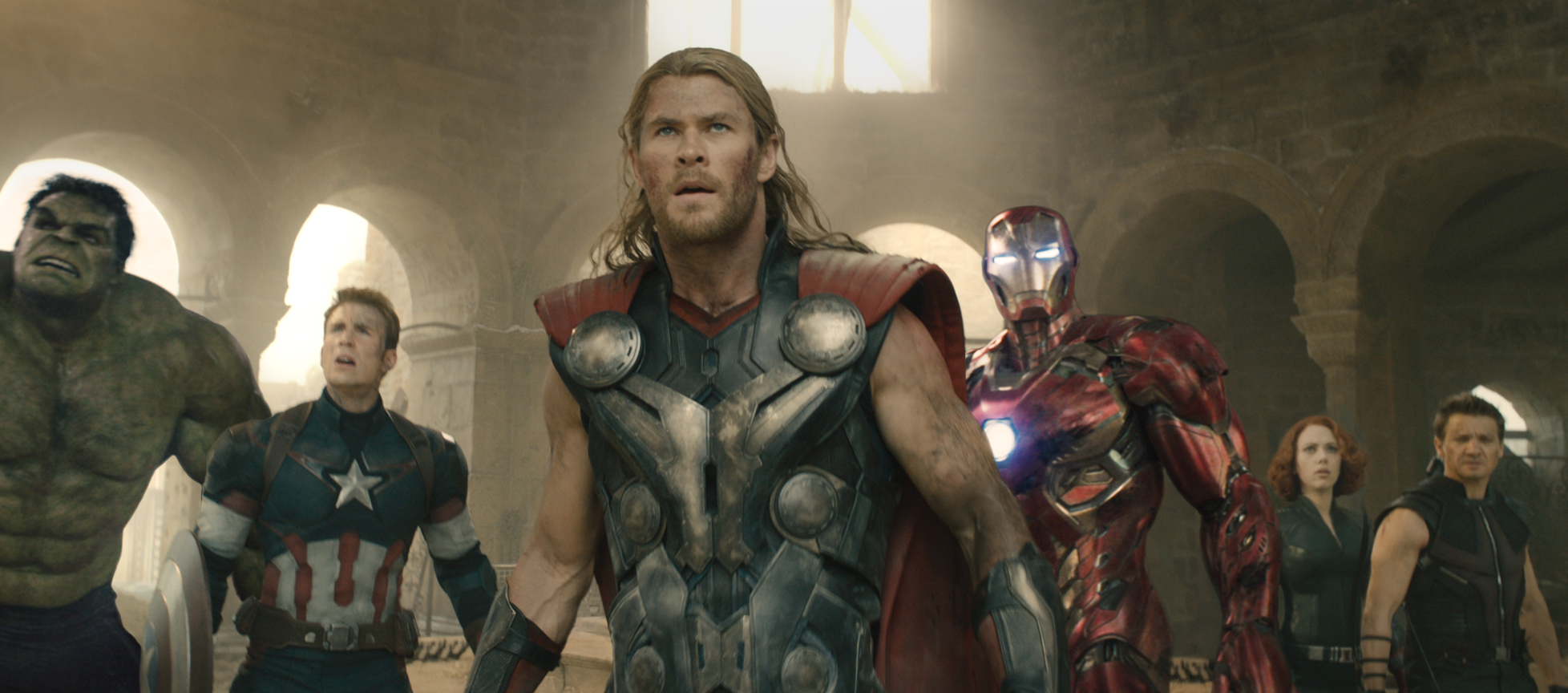
Thor’s Arc and Character Development
In “Age of Ultron,” Thor’s character arc includes visions of the future that set the stage for subsequent films in the series, particularly “Thor: Ragnarok” and “Avengers: Infinity War.” His journey in the film contributes to the overarching narrative of the Infinity Stones, further tying the individual stories of the Avengers into the broader tapestry of the MCU. Hemsworth’s portrayal of Thor continues to balance the character’s god-like demeanor with a relatable sense of humor and depth, highlighting his growth from a warrior prince to a more nuanced protector of both Asgard and Earth.
Action, Humor, and Visual Spectacle
“Avengers: Age of Ultron” is celebrated for its action sequences, visual effects, and the integration of humor throughout the narrative. The film’s set pieces, from the opening assault on a Hydra fortress to the climactic battle in Sokovia, demonstrate the technical prowess and creativity of the production team. The humor, often character-driven, serves to humanize the heroes and provide moments of levity amid the high stakes.
Critical Reception and Legacy
While “Age of Ultron” faced criticism for its pacing and perceived narrative overcrowding, it was also praised for its character development, action sequences, and thematic depth. The film explores the consequences of hubris and the moral responsibilities of power, themes that resonate throughout the MCU.
The legacy of “Age of Ultron” within the MCU is significant, setting in motion events that would have far-reaching consequences for the Avengers. It introduced characters such as Vision and Wanda Maximoff, who would go on to play pivotal roles in the universe. Moreover, the film’s exploration of artificial intelligence, ethics, and the cost of security versus freedom are themes that continue to be explored in subsequent MCU projects.

In conclusion, “Avengers: Age of Ultron” stands as a testament to the complexities and challenges of heroism in a world where the line between savior and destroyer is thin. Through its exploration of these themes, alongside Hemsworth’s continued evolution as Thor, the film adds a critical layer to the tapestry of the Marvel Cinematic Universe, engaging audiences with its blend of spectacle, humor, and human drama.
5. “Bad Times at the El Royale” (2018),
Directed by Drew Goddard, is a riveting thriller that stands out for its unique narrative structure, stylish execution, and compelling performances, particularly by Chris Hemsworth as a charismatic and menacing cult leader. The film unfolds in a dilapidated hotel straddling the California-Nevada border, bringing together a cast of characters each with their dark secrets and agendas. As the night progresses, their stories intertwine, leading to a series of unpredictable and violent confrontations.
Ensemble Cast and Interwoven Narratives
The film’s narrative is notable for its non-linear storytelling, which allows for the gradual unveiling of each character’s backstory, motives, and connections to one another. This structure creates a complex tapestry of human drama, with Hemsworth’s character, Billy Lee, emerging as a pivotal figure whose arrival at the hotel escalates the tension and stakes for all involved.
The ensemble cast, including Jeff Bridges, Cynthia Erivo, Dakota Johnson, and Jon Hamm, delivers performances that are both nuanced and engaging, effectively drawing the audience into the film’s mysterious and volatile world.
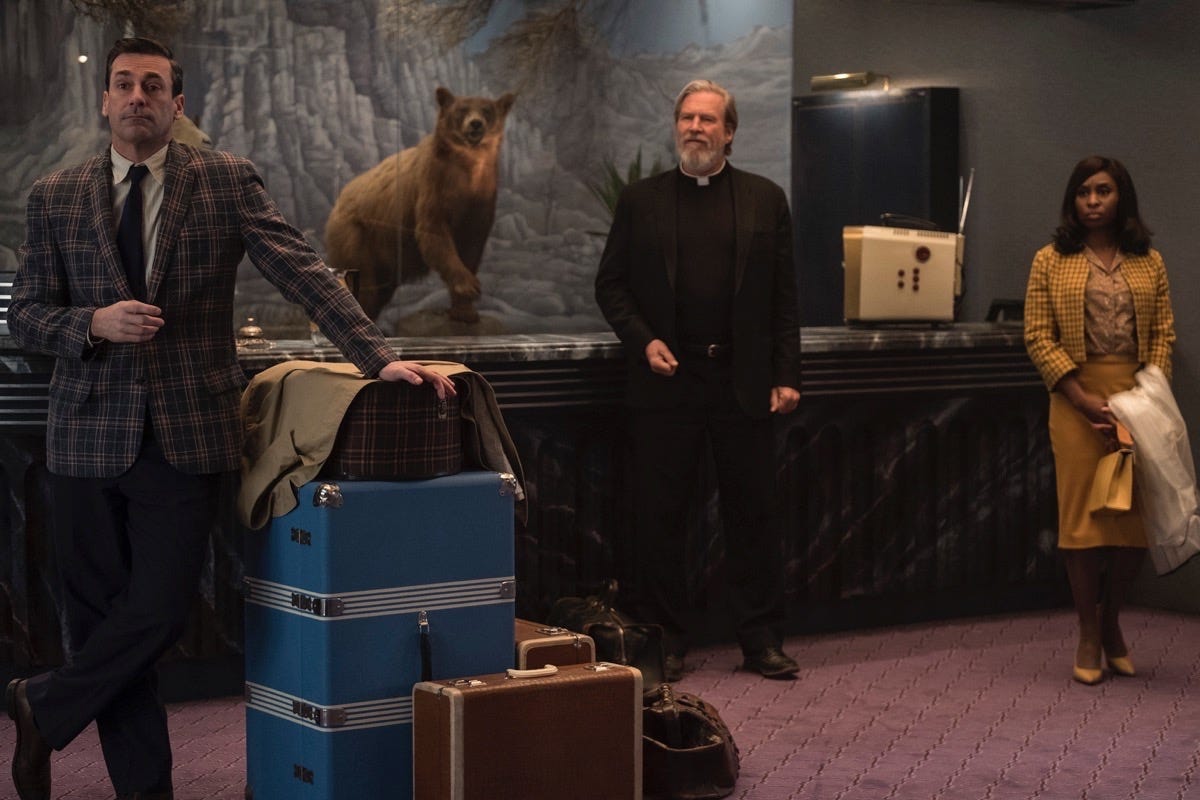
Chris Hemsworth’s Performance
Hemsworth’s portrayal of Billy Lee is a departure from his more heroic roles, showcasing his versatility as an actor. His character is both charming and terrifying, exuding a charisma that belies a manipulative and sadistic nature. Hemsworth’s performance adds a layer of unpredictability and menace to the film, making Billy Lee a memorable and unsettling antagonist. His interactions with the other characters reveal the dynamics of power, loyalty, and desperation that drive the film’s narrative.
Stylistic Elements and Atmosphere
“Bad Times at the El Royale” is distinguished by its stylish execution, which includes meticulous attention to period detail, a vibrant soundtrack, and cinematography that enhances the film’s moody and suspenseful atmosphere. The hotel itself, with its outdated glamour and divided loyalties between California and Nevada, serves as a character in its own right, reflecting the duality and moral ambiguity of the film’s characters.
Critical Reception and Themes
The film received praise for its writing, direction, and performances, with critics noting its clever plot twists, thematic depth, and Goddard’s skillful handling of tension and pacing. While “Bad Times at the El Royale” explores themes of redemption, guilt, and identity, it also delves into the darker aspects of human nature, such as manipulation, violence, and the desire for power.

Conclusion
“Bad Times at the El Royale” stands as a testament to the power of storytelling, character development, and atmospheric filmmaking. Chris Hemsworth’s role as Billy Lee highlights his ability to inhabit complex and morally ambiguous characters, adding a captivating edge to the film’s ensemble cast. The film’s blend of suspense, drama, and a touch of noir, coupled with its stylistic flair and thematic richness, makes it a memorable entry in the thriller genre.
6. “Snow White and the Huntsman” (2012),
Directed by Rupert Sanders, is a visually stunning and dark reinterpretation of the classic Snow White fairy tale. The film distinguishes itself from traditional retellings through its grim tone, epic battles, and a more active and warrior-like portrayal of Snow White. Chris Hemsworth’s portrayal of the Huntsman adds a complex, rugged depth to the story, offering a mix of sorrow, strength, and eventual redemption that diverges from the original tale’s simpler narratives.
Hemsworth’s Huntsman: A Complex Ally
In this adaptation, Hemsworth’s Huntsman is initially a reluctant protector of Snow White, played by Kristen Stewart. Mourning the loss of his wife, he finds a renewed sense of purpose in guarding Snow White against the evil Queen Ravenna, portrayed by Charlize Theron. Hemsworth delivers a multifaceted performance, seamlessly blending the Huntsman’s gruff exterior with moments of vulnerability and kindness. His dynamic with Stewart’s Snow White evolves from one of skepticism to genuine care, providing the emotional backbone of the film.
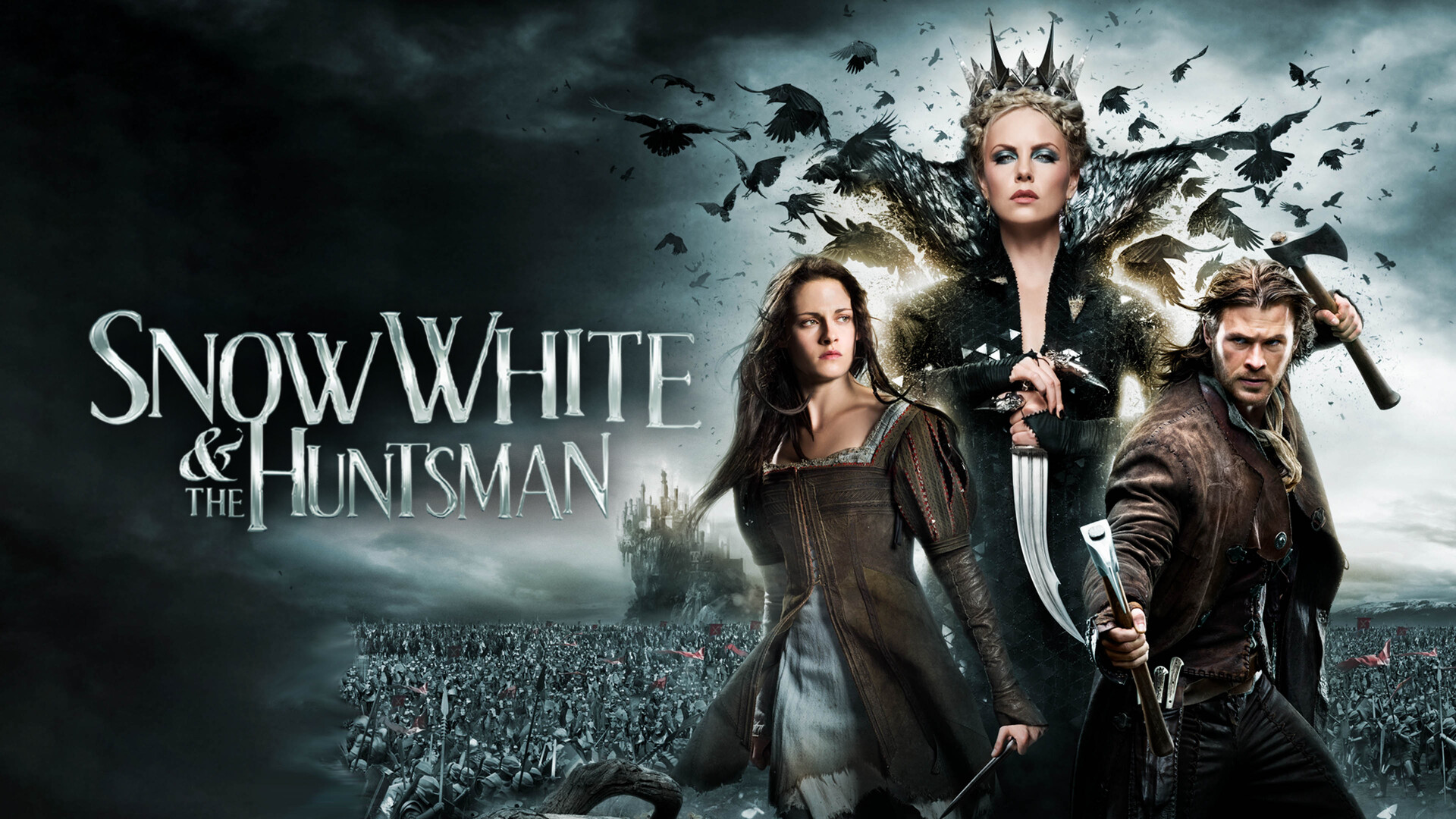
Visual Style and Cinematography
“Snow White and the Huntsman” is celebrated for its breathtaking visual style, which immerses audiences in a world both familiar and entirely new. The film’s production design and special effects bring to life the dark forests, fairy-filled sanctuaries, and the stark beauty of the Queen’s castle, creating a fairy tale setting that’s grounded in a tangible, albeit fantastical reality. The cinematography captures the stark contrasts of this world, from the dark, foreboding woods to the vibrant, enchanted sanctuary where Snow White finds brief respite.
Performance and Character Development
The performances, particularly those of Hemsworth, Stewart, and Theron, are pivotal to the film’s success. Theron’s Queen Ravenna is both terrifying and tragically compelling, offering a glimpse into the vulnerabilities that drive her to darkness. Stewart’s Snow White embodies both purity and resilience, challenging traditional perceptions of the character as passive. Hemsworth’s Huntsman provides the emotional and physical strength that complements Snow White’s inner fortitude, making them a formidable pair against the Queen’s tyranny.
Critical Reception and Themes
The film received mixed reviews, with critics praising its visual effects, production design, and the performances of the cast, while some criticized its pacing and script. Despite this, “Snow White and the Huntsman” found an audience appreciative of its darker tone, complex characters, and reinterpretation of a well-known story. Themes of beauty, power, and mortality are explored through Queen Ravenna’s obsession with youth and the contrasting innocence and purity of Snow White, which ultimately heralds a new era of peace and righteousness.

Conclusion
“Snow White and the Huntsman” offers a darkly enchanting twist on a classic fairy tale, bolstered by strong performances and a visually arresting world. Chris Hemsworth’s Huntsman adds depth to the narrative, offering a portrayal that blends sorrow, strength, and redemption. The film’s exploration of themes such as the corrupting influence of power and the resilience of the human spirit contributes to its standing as a distinctive and memorable take on the Snow White legend.
7. “In the Heart of the Sea” (2015),
Directed by Ron Howard, is a gripping survival drama that recounts the harrowing ordeal of the Essex, a whaling ship that was sunk by a giant sperm whale in 1820, serving as the real-life inspiration for Herman Melville’s “Moby-Dick.” The film is a vivid exploration of survival, the destructive nature of obsession, and man’s relationship with the environment. Chris Hemsworth’s portrayal of the ship’s first mate, Owen Chase, stands out for its intensity and emotional depth, highlighting his struggle for survival and leadership amid an unforgiving sea and the desperation that ensues.
Hemsworth’s Owen Chase: A Study of Leadership and Survival
Hemsworth’s performance as Owen Chase is central to the film’s emotional core. Chase is depicted as a skilled and ambitious seaman, whose dreams of captaining his ship are thwarted by class prejudices. Hemsworth brings a palpable sense of determination, frustration, and eventual despair to the role, embodying the physical and emotional toll of the crew’s ordeal. His dynamic with Benjamin Walker’s Captain George Pollard provides a nuanced exploration of leadership, rivalry, and the reconciliation of personal differences in the face of shared adversity.
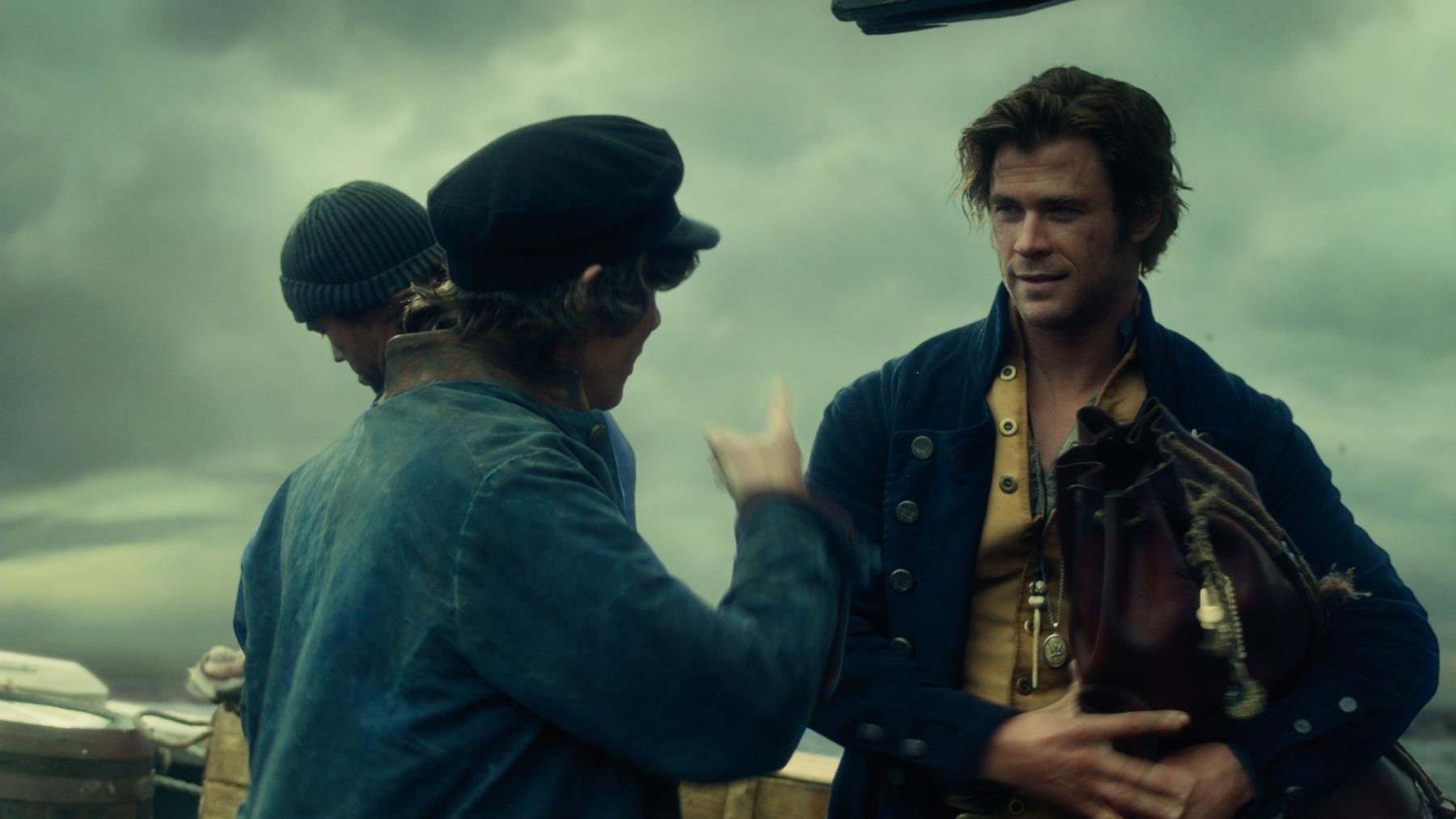
Technical Mastery and Historical Detail
“In the Heart of the Sea” is notable for its technical achievements and historical authenticity. The film employs stunning visual effects to depict the vastness of the ocean, the brutality of whaling, and the terrifying encounters with the whales. These elements, combined with meticulous production design and period-accurate costumes, immerse the viewer in the early 19th-century whaling industry and the maritime life that defined it.
Themes of Obsession, Nature, and Humanity
The film delves deep into themes of human ambition, the destructive obsession with conquering nature, and the consequences of humanity’s disregard for the natural world. The Essex’s encounter with the whale serves as a metaphor for these themes, challenging the crew’s understanding of their place in the world and the price of their pursuits. The narrative also reflects on the storytelling process itself, with the film framed through the eyes of a young Herman Melville, who is inspired to write “Moby-Dick” after interviewing the tragedy’s last surviving crew member.
Critical Reception and Reflections
“In the Heart of the Sea” received mixed reviews, with critics praising the performances, especially Hemsworth’s, and the film’s visual spectacle, but some criticized its pacing and emotional engagement. Despite this, the film offers a compelling look at a pivotal moment in maritime history and its impact on literature and culture. It stands as a testament to the human spirit’s resilience and the profound consequences of our endeavors to dominate the natural world.

Conclusion
Through its harrowing depiction of survival against the odds, “In the Heart of the Sea” provides a stark reminder of the power and unpredictability of nature. Chris Hemsworth’s portrayal of Owen Chase is a highlight, offering a complex character study of a man facing the limits of human endurance and the relentless pursuit of ambition. The film’s exploration of these themes, coupled with its visual grandeur and historical insight, makes it a noteworthy addition to the survival drama genre.
8. “The Cabin in the Woods” (2012),
Directed by Drew Goddard and co-written with Joss Whedon, is a film that ingeniously deconstructs the horror genre. Featuring Chris Hemsworth as one of five college friends who retreat to a remote cabin for a weekend of fun, the movie quickly escalates into a fight for survival against an array of supernatural threats. The film is widely celebrated for its clever subversion of horror tropes, effectively turning the genre on its head while providing commentary on the nature of horror storytelling itself.
Subverting Horror Tropes
At its core, “The Cabin in the Woods” is both a homage to and a critique of traditional horror films. It employs familiar setups—such as the isolated cabin, the group of college students, and the ominous cellar—only to subvert expectations at every turn. The film’s unique twist reveals that the friends’ actions are being manipulated by a mysterious organization, which uses horror scenarios as a form of ritual sacrifice. This meta-narrative allows the film to explore why horror stories are so compelling and what they say about both the audience and the creators.
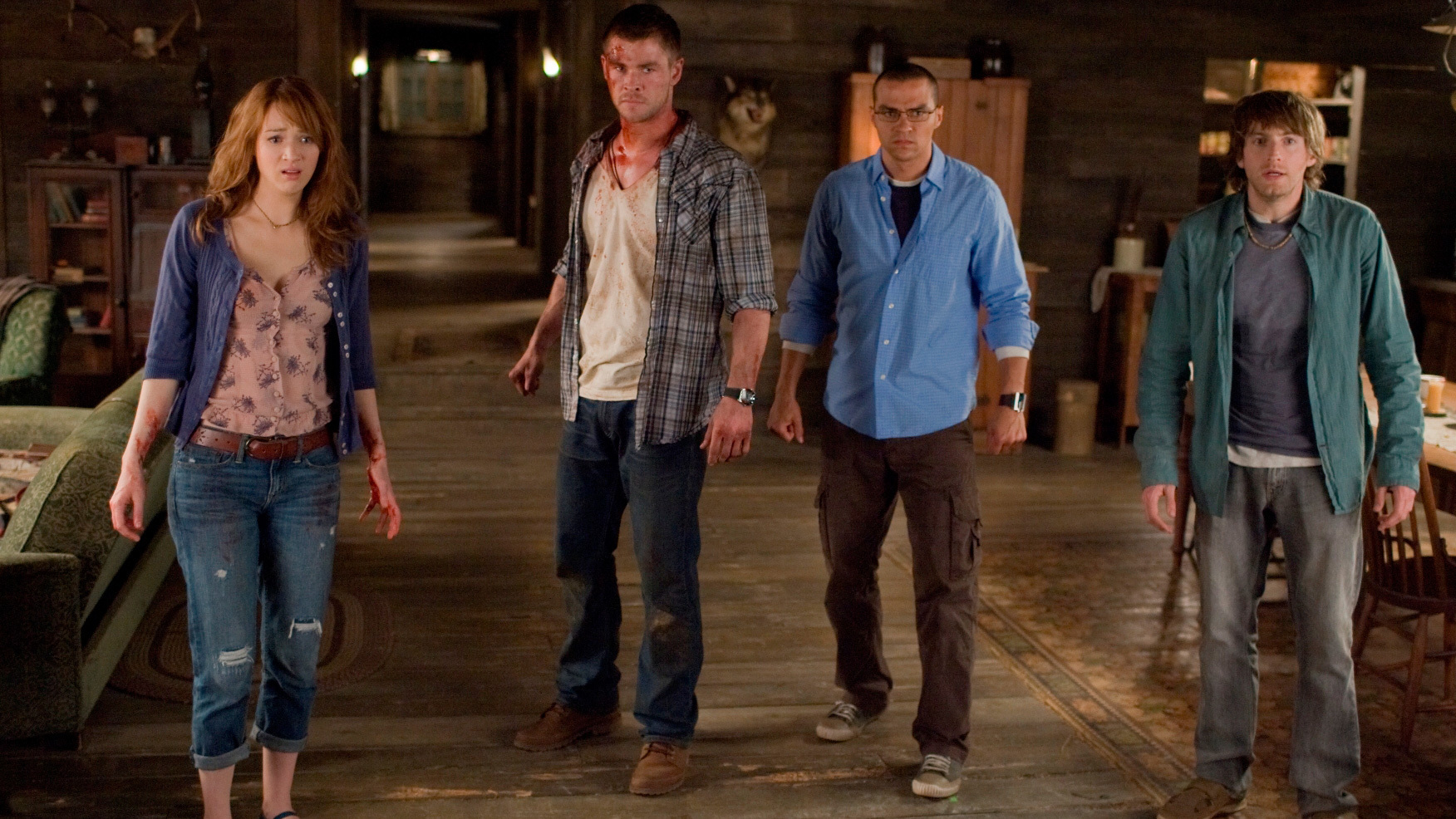
Chris Hemsworth’s Role
Chris Hemsworth plays Curt, the archetype of the “athlete” in the group, who, like his friends, is manipulated to fit into a predetermined role that serves the film’s deeper commentary on horror movie stereotypes. Hemsworth’s performance captures the charm and bravado expected of his character’s archetype, even as the film peels back layers to reveal the artificiality of such roles. His character’s journey is emblematic of the film’s broader examination of fate, free will, and the contrivances of genre storytelling.
Impact and Legacy
“The Cabin in the Woods” received critical acclaim for its originality, wit, and clever critique of the horror genre. It has been lauded for reinvigorating horror with a fresh perspective, reminding audiences and filmmakers alike of the genre’s potential for innovation and commentary. The film has since gained a cult following, appreciated for its layered narrative, sharp humor, and the way it challenges viewers to rethink the conventions of horror movies.

Conclusion
“The Cabin in the Woods” stands out as a pivotal film in Chris Hemsworth’s career and within the horror genre itself. Its success lies not just in the subversion of expectations but in its celebration of the genre’s possibilities. By dissecting the mechanics of horror and offering a narrative that is both entertaining and thought-provoking, the film secures its place as a modern classic that continues to influence and inspire discussions about the nature of horror storytelling.
9. “Red Dawn” (2012),
A remake of the classic 1984 film of the same name, shifts the Cold War era narrative to a modern context, where Chris Hemsworth plays Jed Eckert, a Marine who returns to his hometown just as it is invaded by North Korean forces. Leading a group of teenagers, Jed transforms his younger brother and friends into a guerrilla unit named the Wolverines, fighting back against the occupation. This action-packed film explores themes of patriotism, survival, and the spirit of resistance in the face of overwhelming odds.
Hemsworth’s Leadership as Jed Eckert
Chris Hemsworth’s portrayal of Jed Eckert is central to the film’s narrative. His character embodies the traditional action hero archetype but with a depth that speaks to the realities of war and the weight of leadership. Hemsworth delivers a compelling performance, capturing the resolve and tactical acumen required to lead a group of inexperienced fighters against a well-equipped enemy. His character’s journey from a disillusioned Marine to a committed resistance leader highlights the transformative power of crisis and the importance of leadership in guerrilla warfare.
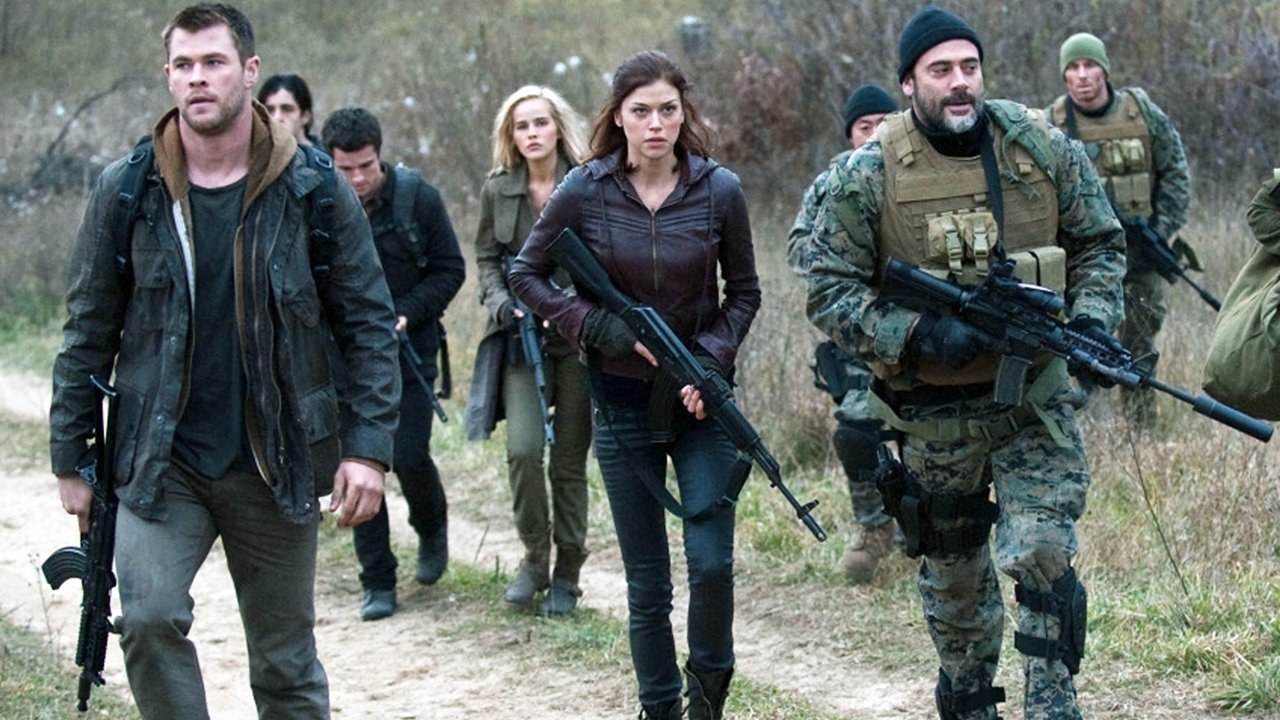
Action and Survival
“Red Dawn” is noted for its intense action sequences and the depiction of guerrilla warfare tactics used by the Wolverines. The film presents a series of skirmishes and battles that are both strategic and desperate, showcasing the ingenuity and resilience of the group. The dynamic between the characters, their growth from ordinary teenagers to determined fighters, and their struggle for survival against the invaders drive the film’s narrative forward.
Critical Reception and Themes
While “Red Dawn” received mixed reviews, with criticism often directed at its premise and political overtones, it found an audience appreciative of its action sequences and the performances of its young cast. The film raises questions about nationalism, the cost of freedom, and the moral complexities of war. Despite its fictional scenario, “Red Dawn” prompts viewers to consider the realities of occupation, resistance, and the sacrifices made in the name of liberty.

Conclusion
“Red Dawn” (2012) stands as a contemporary take on the invasion narrative, offering a blend of action, drama, and a reflection on the values of freedom and resistance. Chris Hemsworth’s role as Jed Eckert showcases his versatility as an actor, capable of carrying both the physical demands of the action genre and the emotional weight of a leadership role. The film, while divisive in its reception, remains a notable entry in the action genre for its exploration of guerrilla warfare and the spirit of defiance in the face of adversity.
10. “Ghostbusters” (2016),
Directed by Paul Feig, reimagines the iconic franchise with a fresh cast and a new perspective, injecting it with a vibrant sense of humor and contemporary sensibilities. Chris Hemsworth’s role as Kevin, the Ghostbusters’ receptionist, is a standout for showcasing his comedic abilities, offering a delightful twist on the expectations of his character. His performance as the charmingly clueless yet endearing Kevin adds a layer of humor that complements the dynamic ensemble of ghost-catching heroines.
Hemsworth’s Comedic Flair
Chris Hemsworth’s portrayal of Kevin is a departure from the action-hero roles he is most associated with. His comedic timing and ability to play off the main cast’s energy contribute significantly to the film’s humor. Kevin’s blissful unawareness and ineptitude at his job provide a source of comic relief, while Hemsworth’s charismatic screen presence ensures that the character remains likable and amusing. His performance demonstrates Hemsworth’s versatility as an actor, capable of handling both the physically demanding roles of action films and the nuanced timing of comedy.
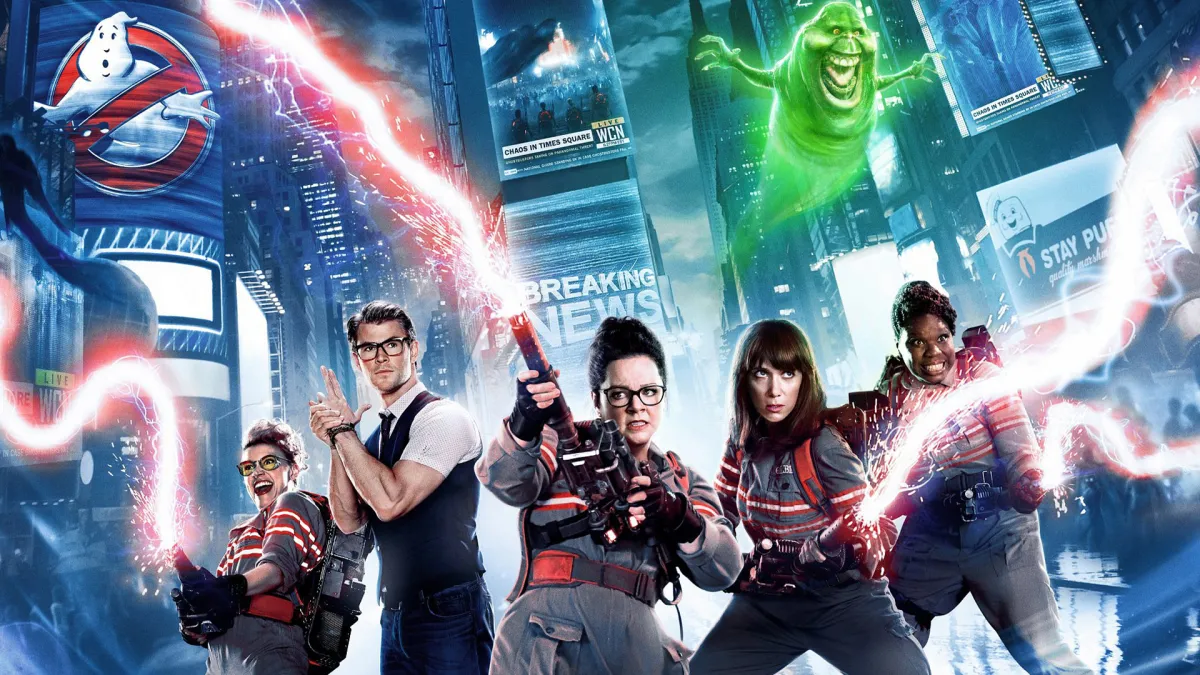
Refreshing the Ghostbusters Legacy
The 2016 reboot of “Ghostbusters” aims to pay homage to the original while also forging its own identity. With a cast led by Melissa McCarthy, Kristen Wiig, Kate McKinnon, and Leslie Jones as the titular ghostbusters, the film updates the franchise with a distinctly contemporary feel, including cutting-edge visual effects and a more diverse cast. The film’s humor, much like its 1980s predecessors, balances slapstick, situational comedy, and witty dialogue, but with a modern twist that reflects current societal attitudes and humor.
Critical Reception and Cultural Impact
While “Ghostbusters” (2016) received a mixed reception, with praise for its humor, performances, and visual effects, it also faced criticism and controversy, particularly regarding its decision to cast women in the lead roles traditionally held by men. Despite this, the film has been recognized for its attempt to introduce the beloved franchise to a new generation, offering a fresh take that respects the spirit of the original while addressing contemporary audiences.

Conclusion
“Ghostbusters” (2016) stands as an important entry in Chris Hemsworth’s career, highlighting his comedic talent and proving his adaptability across genres. The film itself contributes to the ongoing legacy of the “Ghostbusters” franchise, attempting to blend nostalgia with innovation and bringing a new perspective to the ghost-catching adventures. Through its humor, performances, and modernized approach, the 2016 reboot adds a unique chapter to the storied history of “Ghostbusters.”
Reflecting on the top 10 best movies of Chris Hemsworth offers a panoramic view of an actor whose career has been as varied as it has been impactful. From embodying the mythic Thor to exploring the depths of the sea, Hemsworth’s roles have traversed a wide spectrum of human emotion and experience. These films not only highlight his range as an actor but also his growth, from early roles that showcased his potential to complex characters that demonstrate his maturity and depth.
Hemsworth’s contributions to cinema extend beyond the confines of genre. His performances have not only entertained but also provoked thought, laughter, and, at times, introspection. Whether through the spectacle of action-packed narratives or the quiet moments of character-driven dramas, Hemsworth has proven his ability to captivate audiences and critics alike.
This exploration of Hemsworth’s top films underscores the dynamic nature of his career and his unwavering commitment to his craft. As he continues to take on new roles and challenges, one thing remains clear: Chris Hemsworth’s journey in film is one marked by constant evolution and an enduring impact on the landscape of contemporary cinema. His work, characterized by versatility, depth, and charisma, ensures that his legacy will be remembered for years to come.


